We continue our review of our 4-night getaway to São Miguel. We began day 3 by driving to Vila Franca do Campo for a whale-watching expedition. The seas did not cooperate, and the outing was canceled. But we did have our first opportunity to eat a local delicacy.
We Loved Queijadas
Portugal’s best-known sweet treat is the pastel da nata. However, if given the choice, I would order the queijada, which adds cheese to the mix. Our friend, who was born nearby, told us we had to try the queijadas made in Vila Franca do Campo. As we waited to hear if our cruise would be canceled, we stopped by a local café.
There we found the delicacies carefully wrapped in white paper. When you open the tightly wrapped package, a healthy amount of confectionery sugar stays propped on top. While the powdery sugar adds sweetness, it is not the jarring, my-teeth-are-aching sensation some may experience with the pastel da nata. The cafe we visited at 8:00 was next door to the shop where they are made. When we learned our excursion was canceled, we booked for the next morning. Yet another opportunity to enjoy queijadas twice. Once, before the cruise, we stopped at the local cafe, and then again at the shop next door (which opened at 9:00) after the cruise, where we bought two boxes to take home.1
Cows and Tea
Satiated and undeterred, we turned the page to our day 4 activities.2 We headed north to the Gorreana Tea Factory. On route, we encountered a herd of cows being moved to a neighboring field. We sat by the roadside, cameras in hand. It would appear that the locals beep their horn and move through the cows, but having grown up in the Philly suburbs, I was perfectly happy to watch the cows watch us as they passed.
Founded in 1883, Gorreana is the oldest tea factory in Europe that is still in operation. Covering 32 hectares, the plantation produces 40 tons of product a year, benefiting from the humid, rainy climate, mild temperatures, and acidic/volcanic soil. The company remains family-owned.
Planted hundreds of kilometres from industrial pollution, in the vast mountains of the lush estate, Gorreana tea is not subject to any use of herbicides, pesticides, fungicides, dyes or preservatives. — Gorreana.pt
Parque Natural de Ribeira dos Caleirões
Next, we drove to Nordeste to visit a popular park which runs along the Guilherme River. Known for its waterfalls and 16th-century water mills, it provided a pleasant way to enjoy the peace and beauty of the island.
We then drove a short way, stopping periodically at the many miradouros (viewpoints) the island offers. Of note is Miradouro da Ponta do Sosse, which includes a lovely park and magnificent views of the northern coast. After lunch in Nordeste, we visited Praia do Areal de Santa Bárbara and even stopped by one of the three golf courses on the island.3
We ended our day touring a local pineapple plantation near Ponta Delgado.4 The Plantação Ananases A. Arruda was founded by Dr. Augusto Arruda in the late 19th century. In the early 20th century, it was one of the world's largest exporters of pineapples. However, after WWII, the family shifted its focus to tourism, and today, every pineapple grown on the plantation is sold directly to the consumer who visits their gift shop or restaurant. As we sipped our pineapple sangria in their garden, we enjoyed a lovely conversation with the head farmer, who educated us on the unique “hot-bed” method of growing. He explained that after 4 months, leaves and shavings are set on fire, creating a smoke within the glass and wood hot houses. The smoke is permitted to escape after 24 hours. This process provides natural pest control as well as forces all the plants to mature at the same rate.
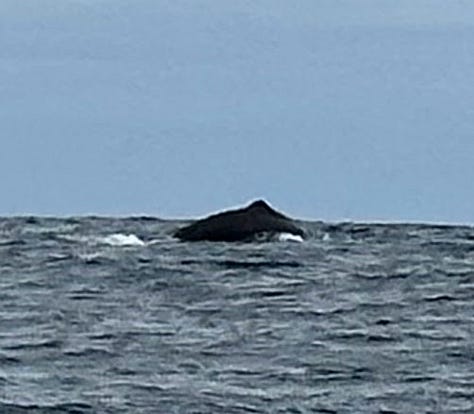
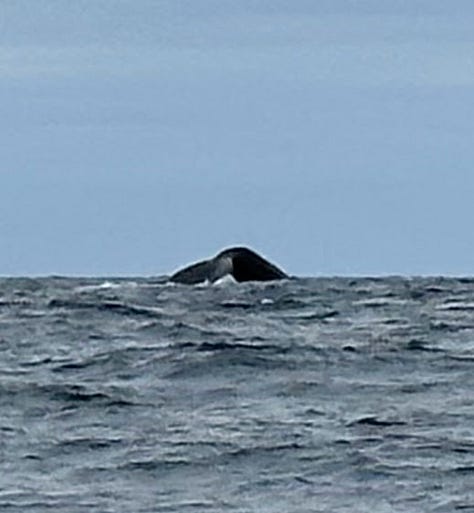
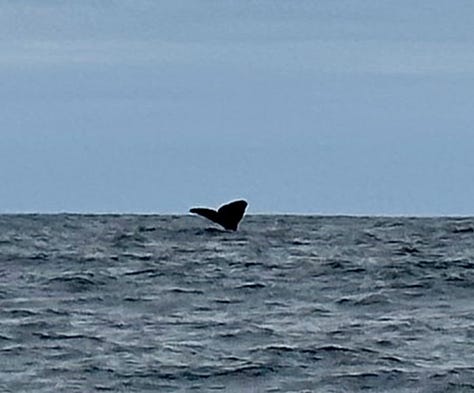
Day 4
On our last full day on São Miguel, we were able to board zodiacs, see lots of common dolphins, and two whales.5 The company we used employs spotters who gaze out into the ocean to find the best sites. One moment you could be drifting among a pod of dolphins, then you hear the radio crackle, the outboards roar, and you are off in pursuit of a whale that has broken the surface. After the tour, we stopped to buy our takeaway queijados and spent the rest of the day touring Vila Franco do Campo.
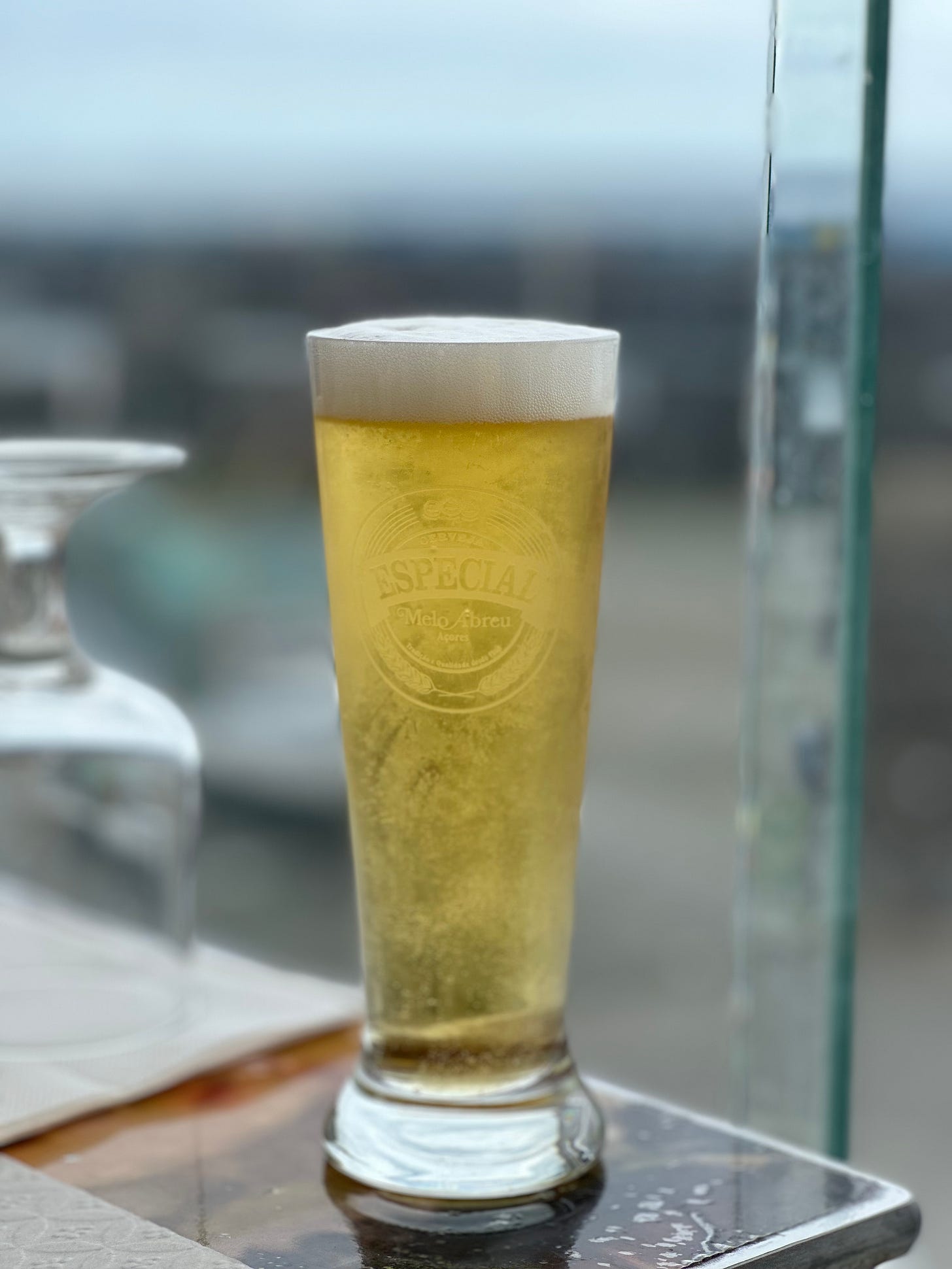
If you plan to visit, you will want to stop by the Hermitage of Nossa Senhora da Paz. Dating back to 1522, the hermitage has an interesting origin:
One day, in search of shelter against bad weather, a pastor saw an image of the Virgin Mary inside a cave. Impressed by his discovery, the pastor took the image to the priest of the parish church.
However, the next day, to the pastor's surprise, the image he had given to the parish priest was again inside the cave. This episode lasted for several days until the parish decided to build the Hermitage of Nossa Senhora da Paz in that place. — Hermitage of Nossa Senhora da Paz
The steps that you see above were built in 1968 to make it easier for the faithful to visit. The 100 steps and 10 landings represent 2/3 of the rosary. The views from the top are worth the effort.
Na próxima semana, considerações finais sobre os Açores,
Nanc
One box did find its way to VRSA and was given to our friend who had turned us onto the delicacy.
In case I failed to mention this before…I am responsible for finding airfares and hotels/airbnbs. The friends we traveled with watched hours of YouTube videos and read tons of blogs. They provided the daily itineraries.
We had a very nice chat with the man in charge and learned that an annual membership to all 3 courses was only 950€/year. They also offer a 350€ membership, which enables one to play golf for only 15€/round. If you are an avid golfer and want to spend 4-6 weeks on the island, it would be an excellent option. Without the memberships, they offer a daily fee rate of 85€.
The pineapples on São Miguel are shorter and rounder than the pineapples one typically buys. We also found they were much sweeter!
I will admit that we saw many more whales when we took a similar tour in Alaska.

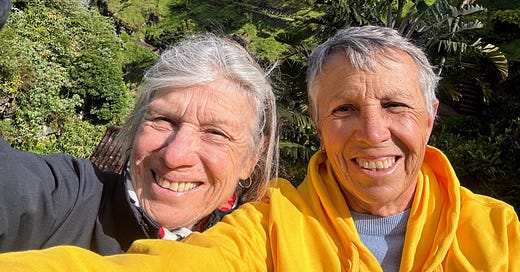



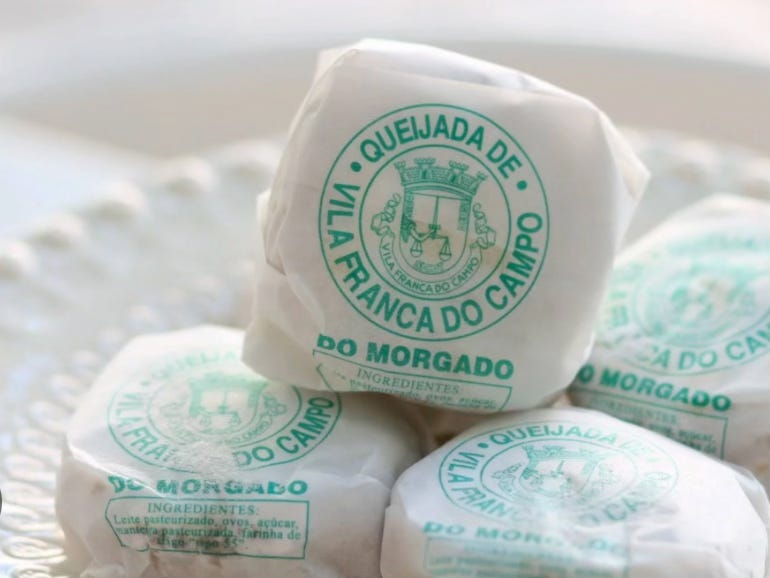

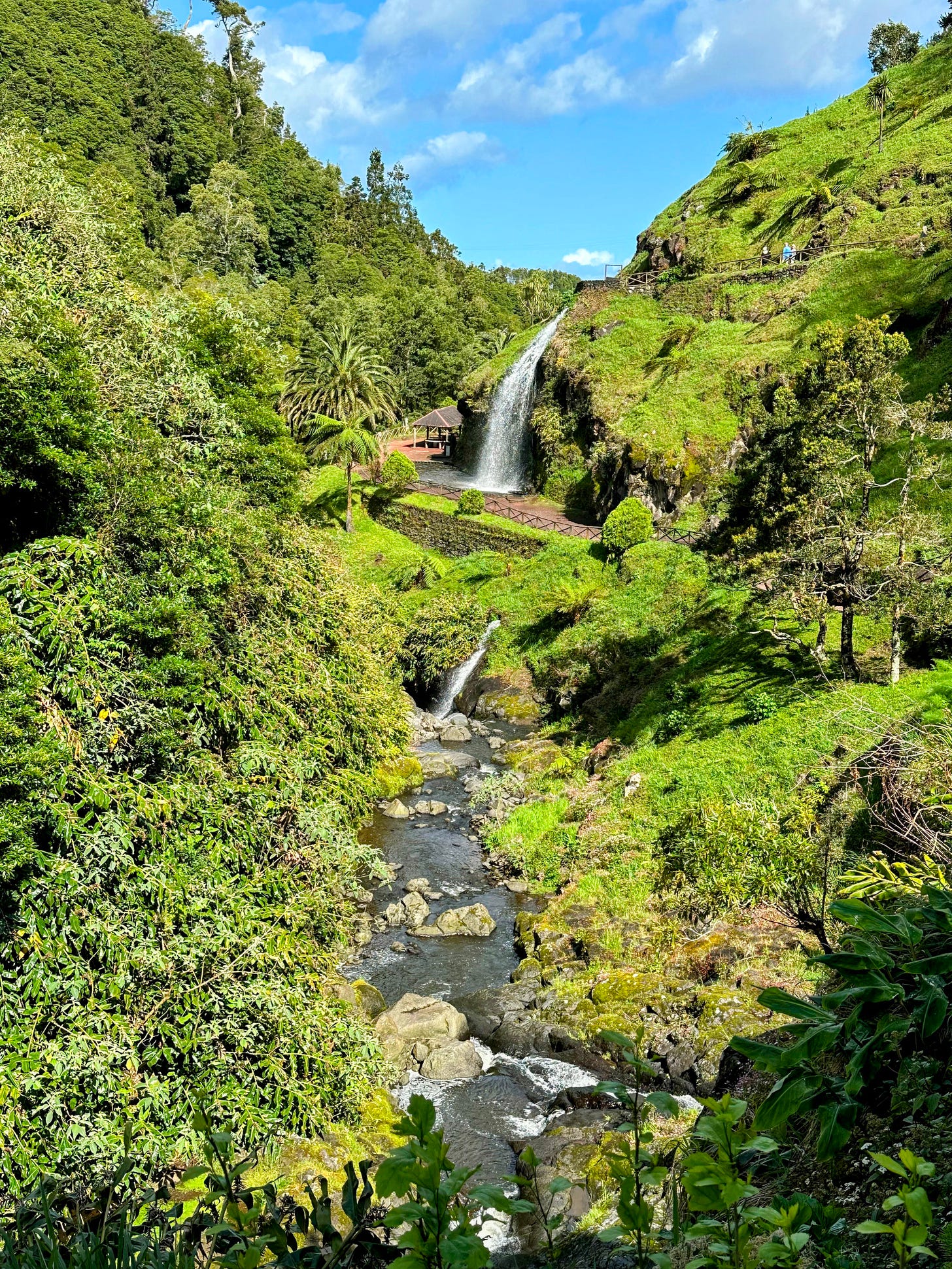
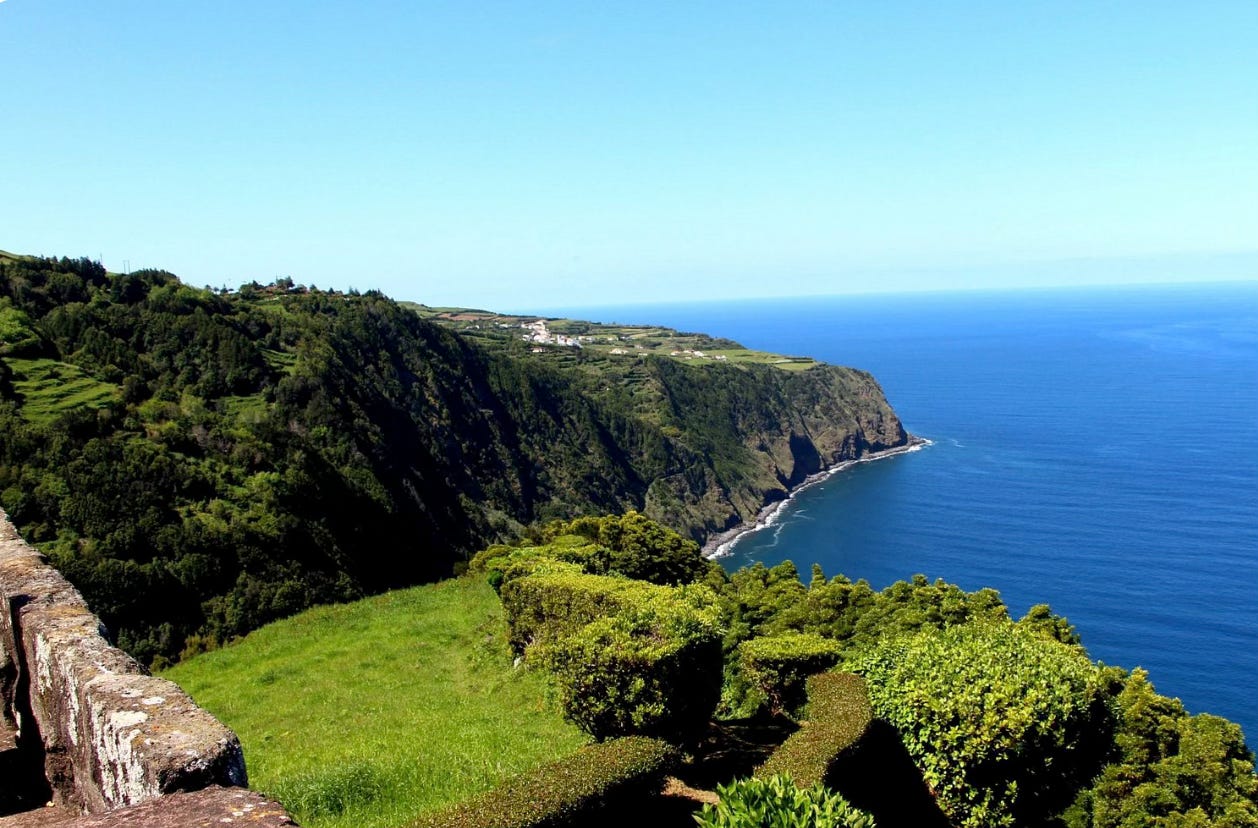
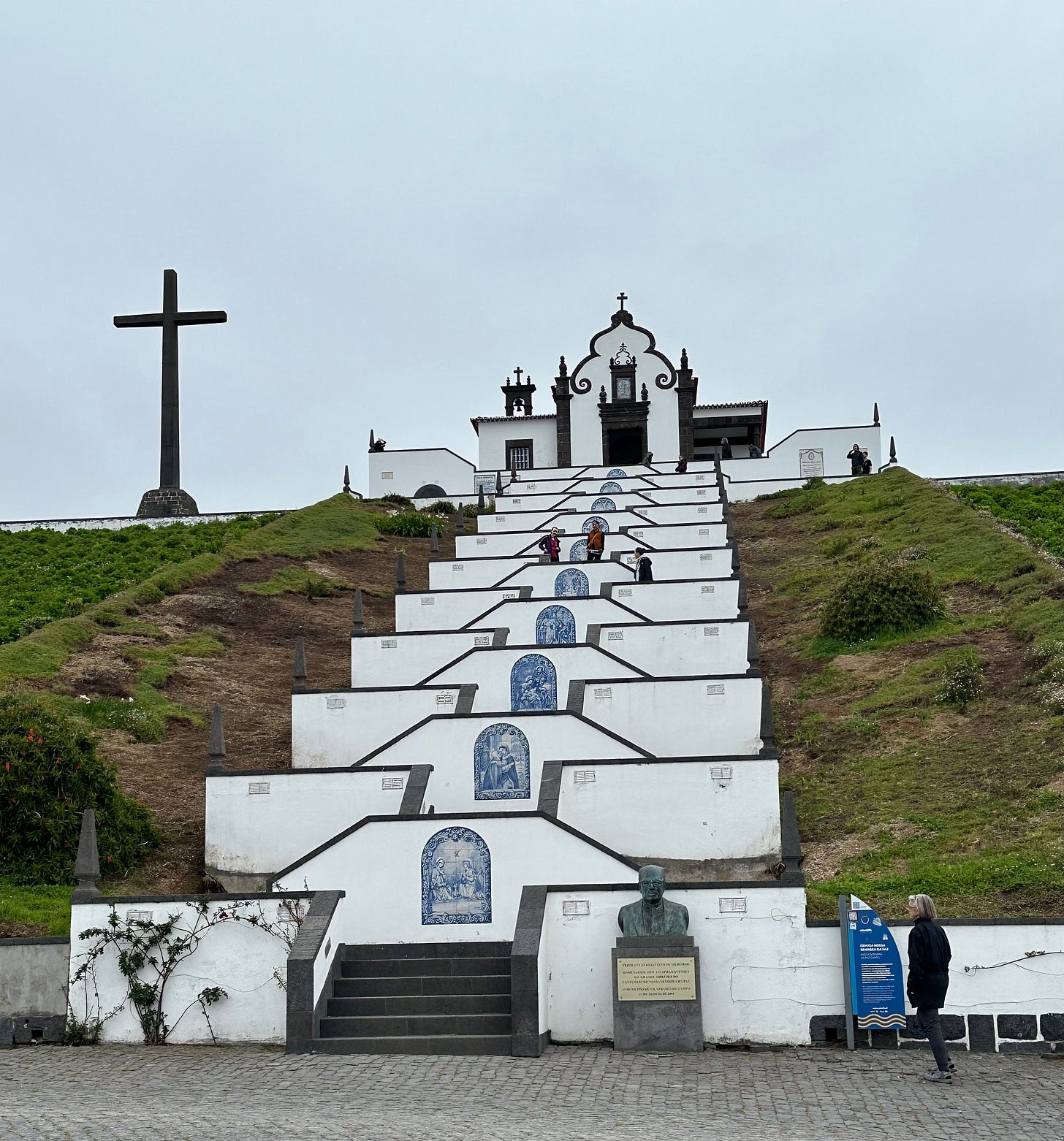
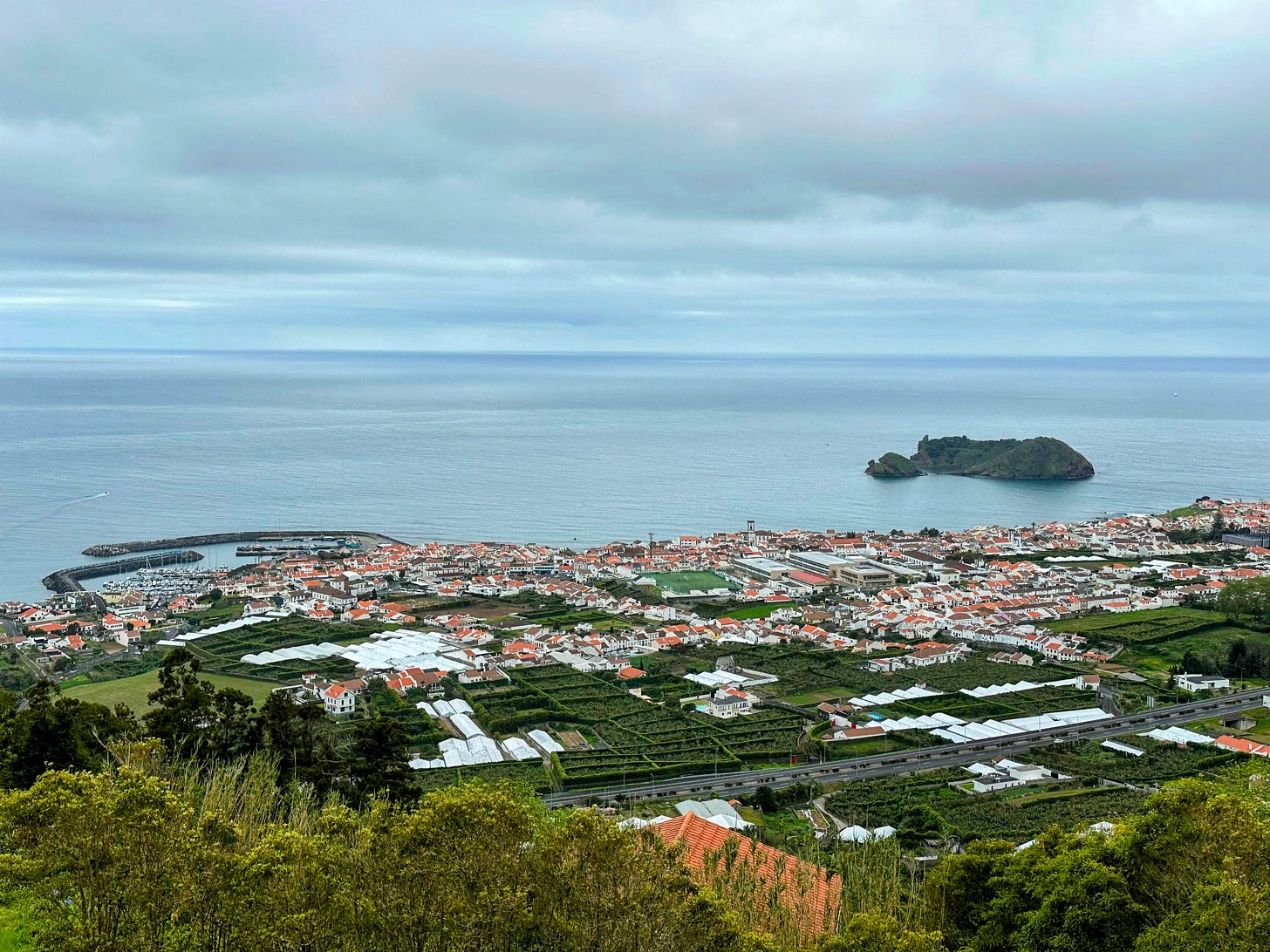
What idyllic, wonderful lives and what a beautiful experience. I didn't know about the tea farm and would love to try it. We are used to the ceylon style of tea characteristic of Great Britain so the available tea in Portugal has always been hit and miss for us.
As an Old Farmer, I was delighted to learn about the growing of the tea and using the Hotbed method, as a natural pesticide and the ripening of the pineapples. Just fascinating.